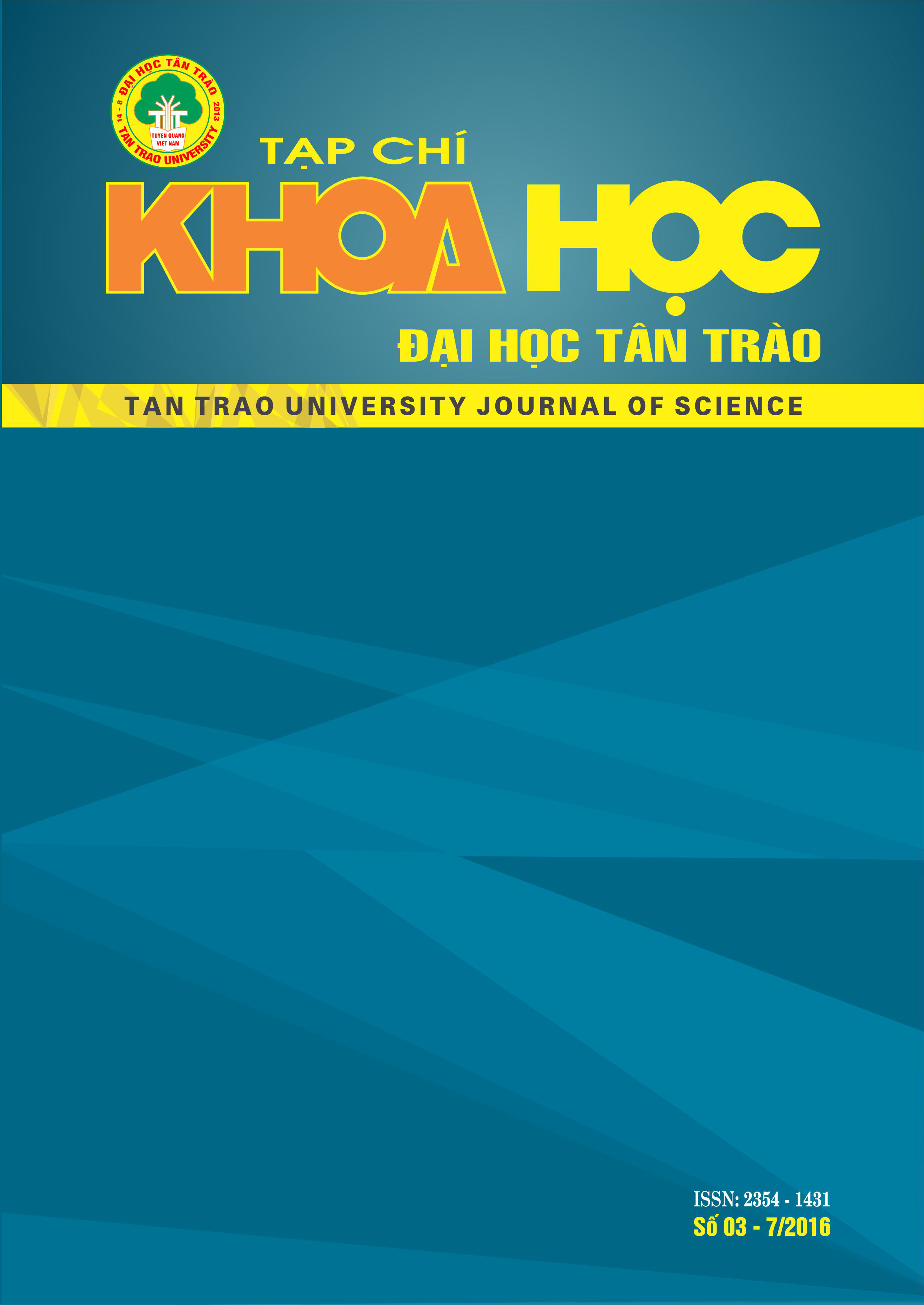Movement of Tuyet prosody type in process of medieval Vietnam poetry
DOI:
https://doi.org/10.51453/2354-1431/2016/66Keywords:
tuyet prosoty; Tang poetry; Vietnamese-Tang poetry; Tang poetry typeAbstract
Tang prosody poems in general and Tuyet prosody in particular, because of strict rules in composition of prosoty,verse, accusative and structure, and thus, the selection of Tuyet prosody, inspite of its advantage of condensation, is still limited in ability of feeling despription according to situation changes. However, in fact, Tuyet prosody is a type in which has potential of diverse adaptation with many different feelings, a long lasting viality, and the longest artistic life in types of Vietnamese poetry. This article pinpoints characteristics in type of Tuyet prosody and initially examines the movement of this prosody in process of medieval Vietnamese poetry.
Downloads
References
1. Nguyễn Sĩ Đại (1996), Một số đặc trưng nghệ thuật của thơ tứ tuyệt đời Đường, Nxb Văn học, Hà Nội;
2. Nguyễn Thị Bích Hải, Thi pháp Thơ Đường - Một số phương diện chủ yếu, LAPTS, ĐHSP Hà Nội I;
3. Nguyễn Khắc Hiếu (1932), “Thơ văn cận cổ”, An Nam tạp chí, số 3;
4. Dương Quảng Hàm (1996), Việt Nam văn học sử yếu, Nxb Hội Nhà văn;
5. Dương Mạnh Huy (1931), Đường thi hợp tuyển, Liễu Viên thư xã, Sài Gòn;
6. Bùi Văn Nguyên, Hà Minh Đức (1971), Các thể thơ ca và sự phát triển của hình thức thơ ca trong văn học Việt Nam, Nxb Khoa học xã hội, Hà Nội;
7. Lạc Nam (1995), Tìm hiểu các thể thơ, Nxb Văn học, Hà Nội;
8. Nhiều tác giả (1983 - 1984), Từ điển văn học Tập II, Nxb Khoa học xã hội, Hà Nội;
9. Nhiều tác giả (1984), Từ điển thuật ngữ văn học, Nxb Giáo dục, Hà Nội;
10. Nhiều tác giả (1981), Từ trong di sản, Nxb Tác phẩm mới.
Downloads
Published
How to Cite
Issue
Section
License

This work is licensed under a Creative Commons Attribution-ShareAlike 4.0 International License.
All articles published in SJTTU are licensed under a Creative Commons Attribution-ShareAlike 4.0 International (CC BY-SA) license. This means anyone is free to copy, transform, or redistribute articles for any lawful purpose in any medium, provided they give appropriate attribution to the original author(s) and SJTTU, link to the license, indicate if changes were made, and redistribute any derivative work under the same license.
Copyright on articles is retained by the respective author(s), without restrictions. A non-exclusive license is granted to SJTTU to publish the article and identify itself as its original publisher, along with the commercial right to include the article in a hardcopy issue for sale to libraries and individuals.
Although the conditions of the CC BY-SA license don't apply to authors (as the copyright holder of your article, you have no restrictions on your rights), by submitting to SJTTU, authors recognize the rights of readers, and must grant any third party the right to use their article to the extent provided by the license.


